
INNOVARCHI
D1 tower

D1 tower
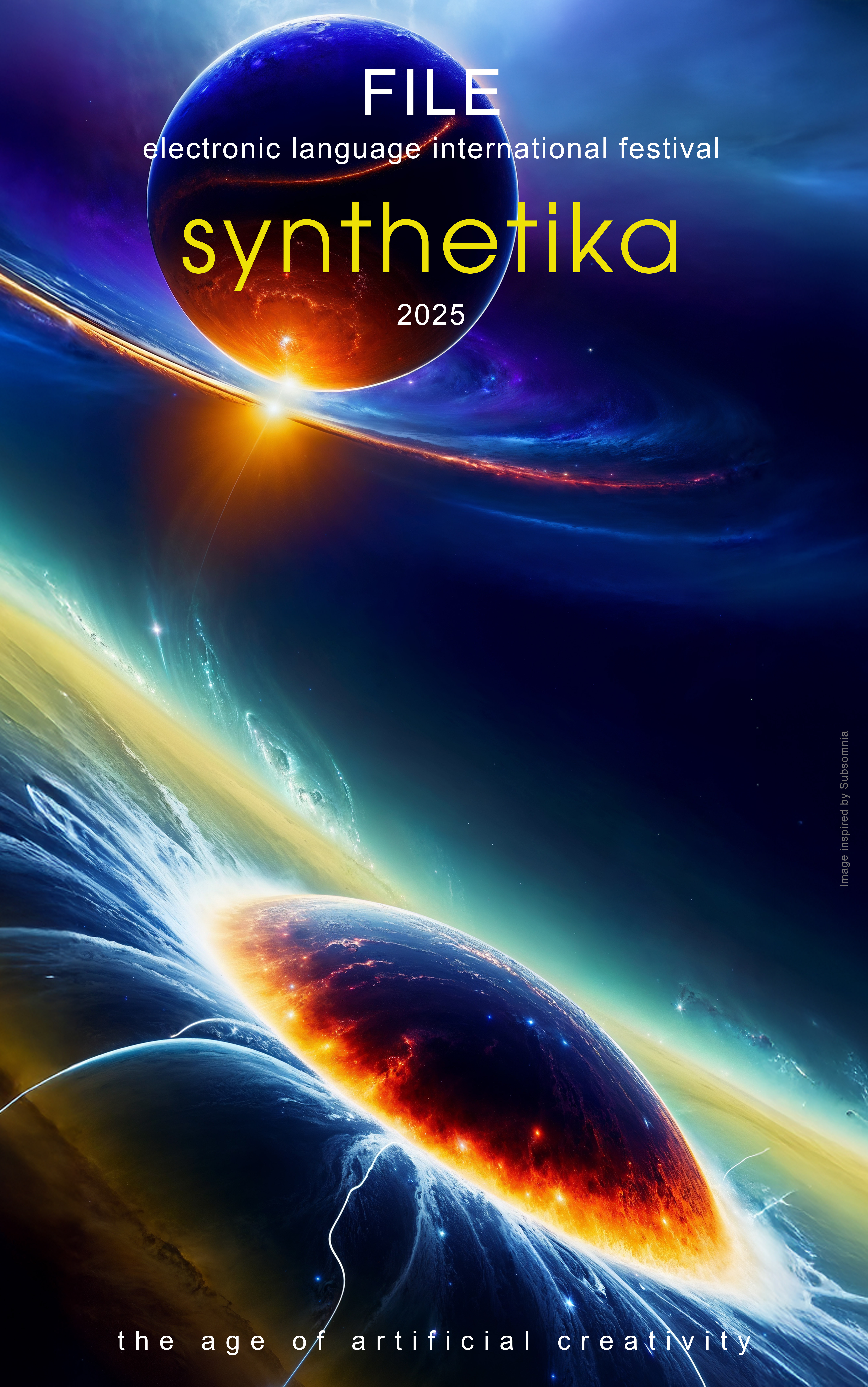
Unlike Hegel, who called the set of ideas of a given era the “spirit of the times” (Zeitgeist), we could call our era “Zeitsynthetik” (the time of the synthetic). In the classical period, art was inseparable from religion, whose essence was spirituality; in modernity, spirituality was replaced by the ideologies of grand narratives (capitalism and socialism). The classical arts invented poetics and aesthetics: the beautiful and the sublime. Modern art invented the avant-garde that proposed to be revolutionary, its driving force was the dialectic of the new without the old, and on the other hand, postmodernists mixed everything with everything, including the old with the new. Today we live in the era of synthetic technologies, the era of disruptive technologies. In which the new of modernity is no longer sufficient or surprising. Syntheticity is the new vector: synthetic algorithms; synthetic virtual realities; synthetic intelligences. The driving force behind synthetic art is: 1) the fusion of new art and technological innovation, and 2) the inter-creativity between the artist and artificial creativity. Prompt engineers strategically simulate personas for AIs in order to move away from triviality and thus obtain more creative results. Synthetic intelligences are no longer just instruments, but partners of artists in the construction of a creative and innovative symbiosis.
Art and culture are going through a moment in which creativity ceases to be just human, it becomes artificial; syntheticity thus prospects a post-culture, a new FORM: the form SYNTHETIKA.
Ricardo Barreto
Curator and co-founder of FILE

QUBIT AI | quantum & synthetic ai
Electronic Language International Festival
July 3rd to August 25th
Tuesday to Sunday, 10am – 8pm
FIESP Cultural Center
Design: André Lenz
Image: Iskarioto Dystopian AI Films – Athena
QUBIT AI
In its 25 years of existence, the International Electronic Language Festival (FILE) is an internationally renowned Brazilian project that since 2000 has explored the intersection between art and technology. With more than two decades of history, the festival stands out for fostering exhibition spaces and debate about artistic innovations driven by disruptive and innovative technologies, inviting the public to get involved with experimental forms of art that challenge the boundaries of conventionality. Currently, two of these technologies stand out in the contemporary scenario: the accelerated development of quantum computing and artificial intelligence corroborated by synthetic data.
Quantum computing, an emerging revolution in the technological field, offers a new range of creative possibilities for contemporary artists. This new era allows the exploration of unprecedented frontiers through a new computational format that consists mainly of quantum superposition and entanglement, a new field of exploration for synthetic computer science, as well as for the arts in general; on the other hand, artificial intelligence, fueled by synthetic data, offers artists a new way of making and understanding art, opening up space for new forms, concepts and artistic expressions.
Entitled QUBIT AI, the exhibition delves into this unexplored territory presenting a selection of works of art resulting from the connection between artistic creation and technology, proposing a theoretical reflection on what the interrelationship between quantum computers and synthetic artificial intelligence will be.
Visitors will be invited to experience immersive installations, experimental videos, digital sculptures and other forms of interactive art, which intertwine reality and imagination. The exhibition encourages reflections on the influence of technology on art and contemporary society, while at the same time providing an environment to compare already established technological arts (analog and digital) with the possible futures of art in the synthetic era, enhanced by quantum computing. The QUBIT AI exhibition at FILE SP 2024 transcends the mere presentation of works of art; it is a journey to the limits of human creativity, driven by the convergence of art, science and technology.
Ricardo Barreto and Paula Perissinotto
co-organizers and curators of FILE
International Electronic Language Festival
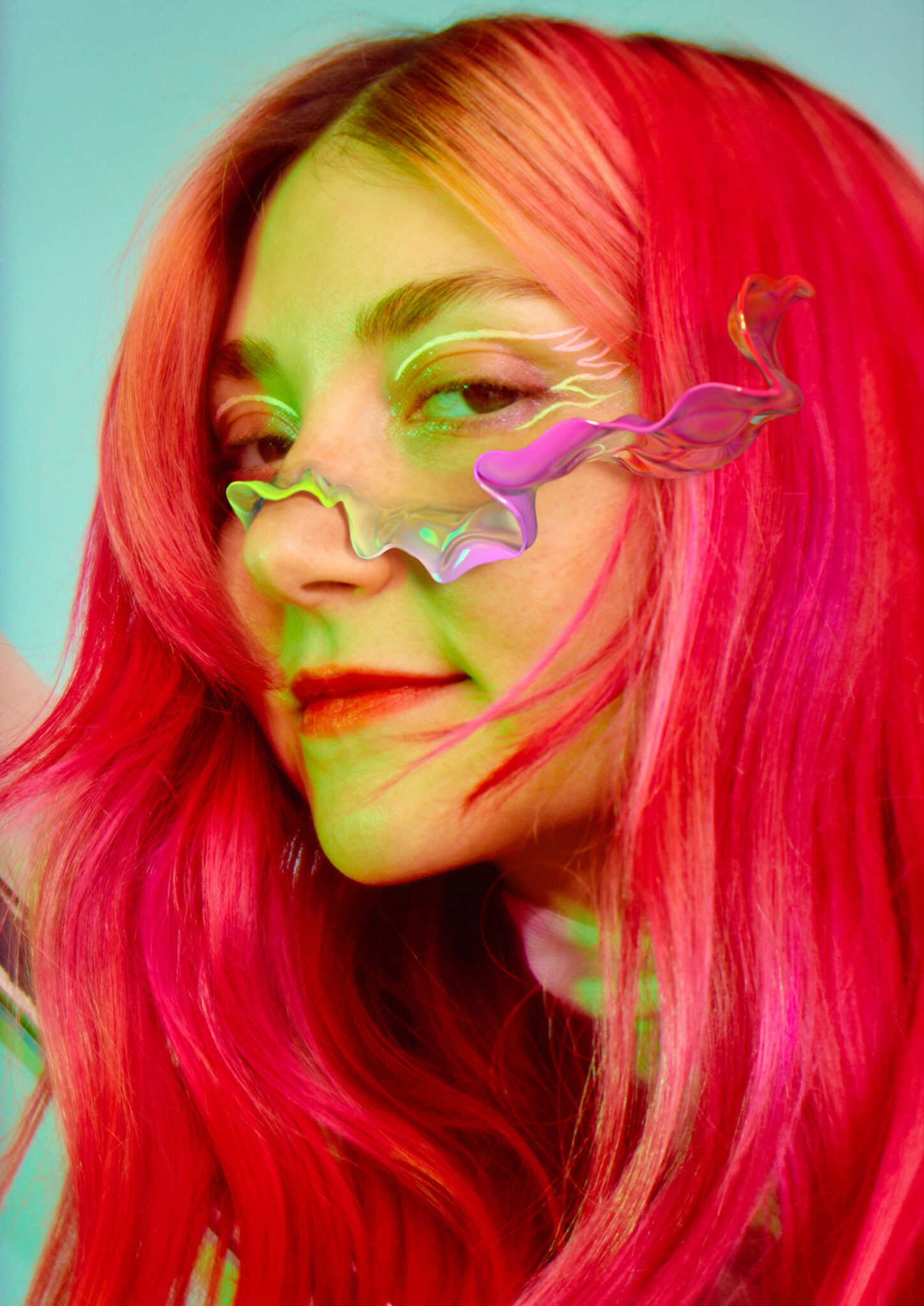
3D Makeup
FILE 2024 | Installations
International Electronic Language Festival
Ines Alpha, a digital artist specializing in 3D makeup, constantly seeks artistic collaborations that transcend her own face. Working only on her personal characteristics became restrictive and monotonous for Ines. Starting from faces as blank canvases, she incorporates digital elements that ‘amplify‘ unique personalities, styles and essences.
Bio
Ines Alpha is a digital artist internationally recognized for her unique 3D makeup style, developed while working in the beauty industry as an art director. Her innovative approach combines makeup with technology, creating ethereal and futuristic narratives, and redefining the future of aesthetics in the world of beauty.
Photo
Diane Sagnier
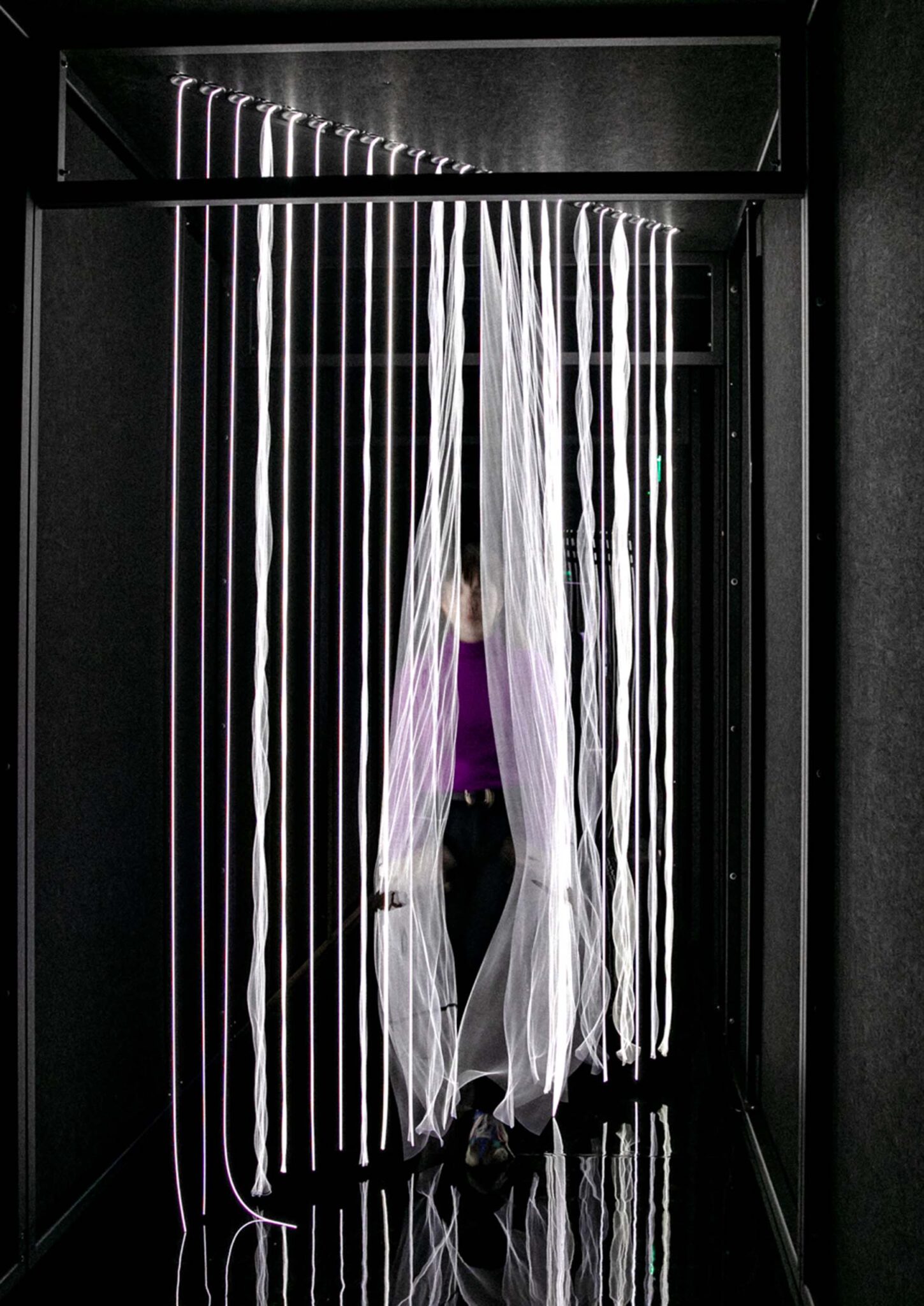
Shell of
FILE 2024 | Installations
International Electronic Language Festival
Marc Vilanova – Cascade – Spain
Waterfalls are a continuous source of infrasonic frequency found in nature. Although inaudible to humans, they play a crucial role in ecosystems, especially for migratory birds who use them as a compass. However, many waterfalls have lost their frequencies due to climate change. The work creates an immersive experience in which the audience interacts with the visualization of sound waves, experiencing the vibration of sound through illuminated strings.
Bio
Marc Vilanova is a sound and visual artist who works at the intersection of art, science and nature. Vilanova’s artistic production has always been led by a spirit of innovation fueled by an interest in new media. His practice combines sound/light installations, performance, and sculpture.
Credits
This work was partially carried out within the scope of the EMAP program at gnration, with the support of the Creative Europe Culture Programme, the Avatar Center in Quebec City and the Ramon Llull Institute.
Photo:
Eloise Coomber
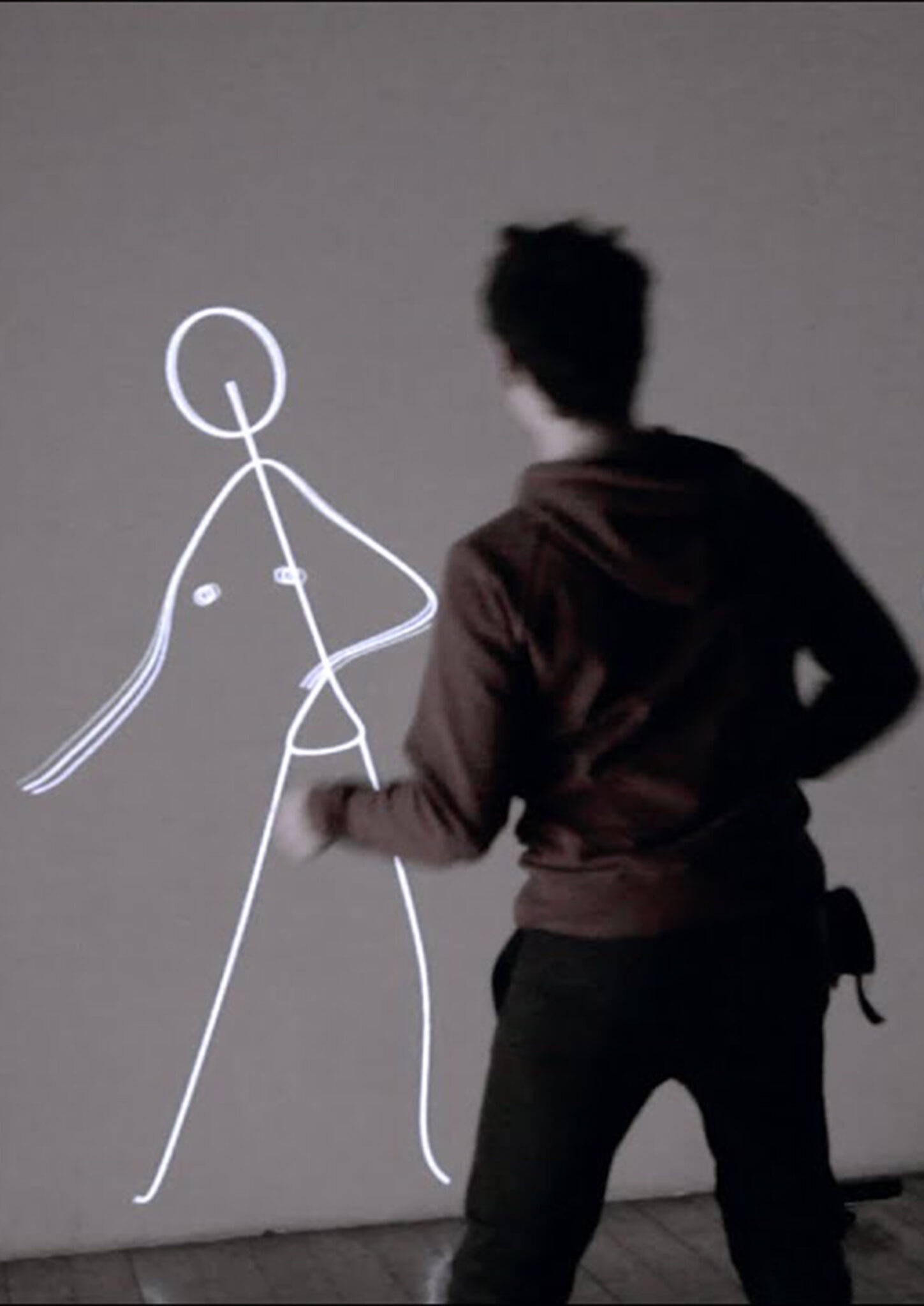
EGO
FILE 2024 | Installations
International Electronic Language Festival
The mirror stage in psychology explains how the Ego forms through objectification, where one’s visual appearance comes into conflict with emotional experience, a concept called ‘alienation‘ by psychoanalyst Jacques Lacan. The interactive installation EGO reenacts and reverses this process by distorting the mirror image based on the user’s movements, highlighting the tension between the real and the symbolic, the Ego and the It, subject and object.
Bio
Klaus Obermaier is an interdisciplinary artist, director and composer who creates innovative works in the performing arts, music and installations using new media. Stefano D’Alessio researches social issues induced by the internet and explores how the web and its derivatives influence human behavior and the body. Martina Menegon creates intricate assemblages of physical and virtual elements, exploring the contemporary self and its hybrid corporeality.

Architecture Concepts Created by AI – Can AI Become an Architect?
FILE 2024 | Architectural Synthetics
International Electronic Language Festival
Lukas Radavicius – Architecture Concepts Created by AI: Can AI Become an Architect? – Lithuania
In recent years, artificial intelligence technologies have advanced significantly in the art world, becoming a vital tool for artists in a variety of disciplines, including architecture. Lukas Radavicius has created videos demonstrating the current capabilities of AI in architecture, showcasing innovative designs that offer insights into the potential of AI to shape the future of architecture.
Bio
Lukas Radavicius, born in Kaunas, Lithuania, is a passionate visual artist who began his career in architecture before moving into graphic design and 3D graphics. With a degree in architecture from the Kaunas Academy of Art, he remains active in design-related fields while exploring the fascinating world of AI art in his spare time.

Architecture Concepts Created by AI: Artificial Intelligence Modern Architecture
FILE 2024 | Architectural Synthetics
International Electronic Language Festival
Lukas Radavicius – Architecture Concepts Created by AI: Artificial Intelligence Modern Architecture – Lithuania
In recent years, artificial intelligence technologies have advanced significantly in the art world, becoming a vital tool for artists in a variety of disciplines, including architecture. Lukas Radavicius has created videos demonstrating the current capabilities of AI in architecture, showcasing innovative designs that offer insights into the potential of AI to shape the future of architecture.
Bio
Lukas Radavicius, born in Kaunas, Lithuania, is a passionate visual artist who began his career in architecture before moving into graphic design and 3D graphics. With a degree in architecture from the Kaunas Academy of Art, he remains active in design-related fields while exploring the fascinating world of AI art in his spare time.

Architecture Concepts Created by AI: Architecture Concepts Made by AI
FILE 2024 | Architectural Synthetics
International Electronic Language Festival
Lukas Radavicius – Architecture Concepts Created by AI: Architecture Concepts Made by AI – Lithuania
In recent years, artificial intelligence technologies have advanced significantly in the art world, becoming a vital tool for artists in a variety of disciplines, including architecture. Lukas Radavicius has created videos demonstrating the current capabilities of AI in architecture, showcasing innovative designs that offer insights into the potential of AI to shape the future of architecture.
Bio
Lukas Radavicius, born in Kaunas, Lithuania, is a passionate visual artist who began his career in architecture before moving into graphic design and 3D graphics. With a degree in architecture from the Kaunas Academy of Art, he remains active in design-related fields while exploring the fascinating world of AI art in his spare time.
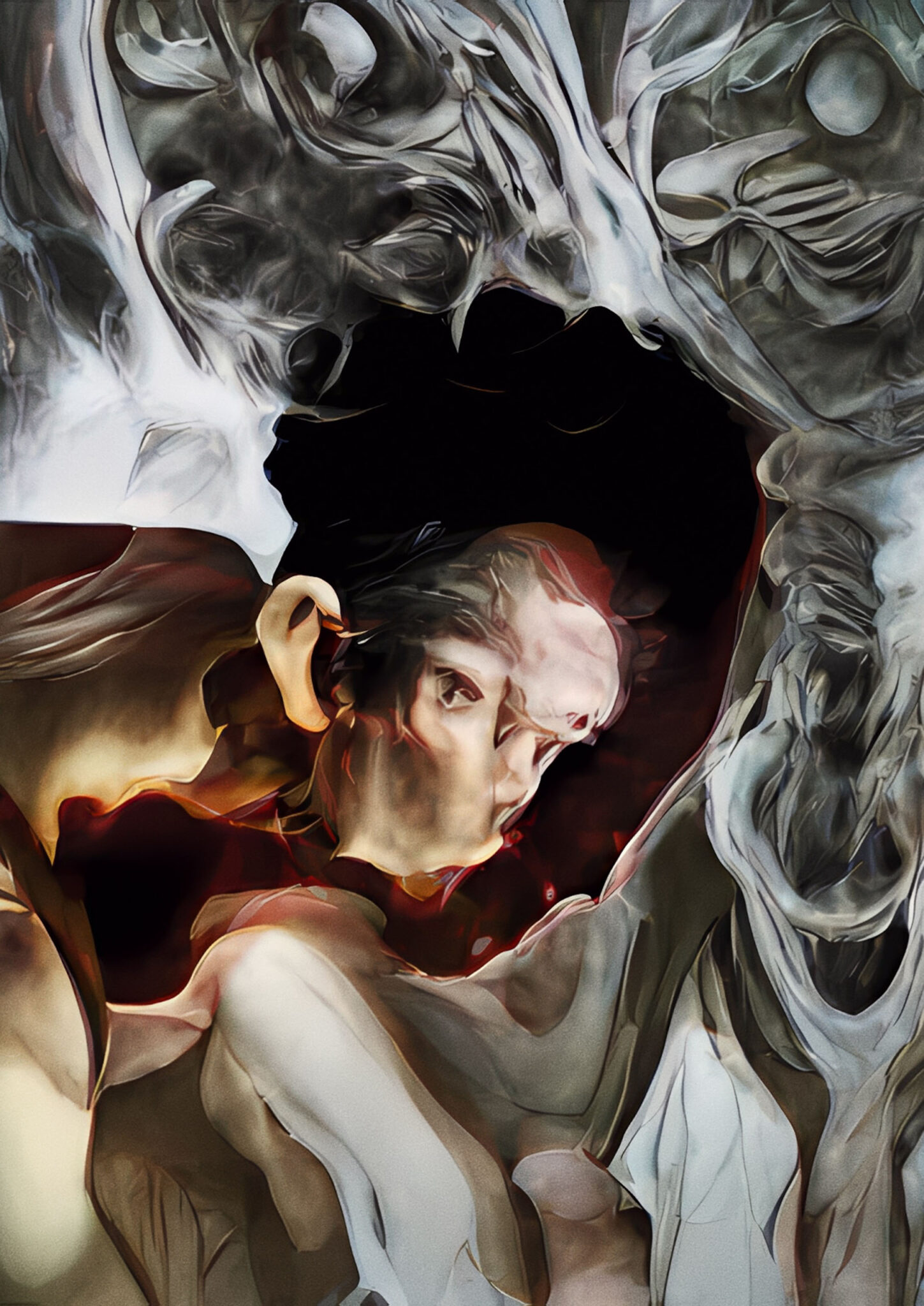
HYSTERESIS
FILE 2024 | Aesthetic Synthetics
International Electronic Language Festival
Robert Seidel – HYSTERESIS – Germany
HYSTERESIS intimately weaves a transformative fabric between Robert Seidel’s projections of abstract drawings and queer performer Tsuki’s vigorous choreography. Using machine learning to mediate these delayed re-presentations, the film intentionally corrupts AI strategies to reveal a frenetic, delicate and extravagant visual language that portrays hysteria and hysteresis in this historical moment.
Bio
Robert Seidel is interested in exploring abstract beauty through cinematic techniques and insights from science and technology. His projections, installations and award-winning experimental films have been presented at numerous international festivals, art venues and museums, highlighting his innovative approach to visual art.
Credits
Film: Robert Seidel
Music: Oval
Performer: Tsuki
Graphics: Bureau Now
5.1 Mixing: David Kamp
Support: Miriam Eichner, Carolin Israel, Falk Müller, Paul Seidel
Financing: German Federal Film Board

FILE 2024
QUBIT AI | quantum & synthetic ai
Electronic Language International Festival
July 3rd to August 25th
Tuesday to Sunday, 10am – 8pm
FIESP Cultural Center
Design: André Lenz
Image: Iskarioto Dystopian AI Films – Athena
QUBIT AI
In its 25 years of existence, the International Electronic Language Festival (FILE) is an internationally renowned Brazilian project that since 2000 has explored the intersection between art and technology. With more than two decades of history, the festival stands out for fostering exhibition spaces and debate about artistic innovations driven by disruptive and innovative technologies, inviting the public to get involved with experimental forms of art that challenge the boundaries of conventionality. Currently, two of these technologies stand out in the contemporary scenario: the accelerated development of quantum computing and artificial intelligence corroborated by synthetic data.
Quantum computing, an emerging revolution in the technological field, offers a new range of creative possibilities for contemporary artists. This new era allows the exploration of unprecedented frontiers through a new computational format that consists mainly of quantum superposition and entanglement, a new field of exploration for synthetic computer science, as well as for the arts in general; on the other hand, artificial intelligence, fueled by synthetic data, offers artists a new way of making and understanding art, opening up space for new forms, concepts and artistic expressions.
Entitled QUBIT AI, the exhibition delves into this unexplored territory presenting a selection of works of art resulting from the connection between artistic creation and technology, proposing a theoretical reflection on what the interrelationship between quantum computers and synthetic artificial intelligence will be.
Visitors will be invited to experience immersive installations, experimental videos, digital sculptures and other forms of interactive art, which intertwine reality and imagination. The exhibition encourages reflections on the influence of technology on art and contemporary society, while at the same time providing an environment to compare already established technological arts (analog and digital) with the possible futures of art in the synthetic era, enhanced by quantum computing. The QUBIT AI exhibition at FILE SP 2024 transcends the mere presentation of works of art; it is a journey to the limits of human creativity, driven by the convergence of art, science and technology.
Ricardo Barreto and Paula Perissinotto
co-organizers and curators of FILE
International Electronic Language Festival

Sounding Qubits
FILE 2024 | Quantico
International Electronic Language Festival
Eduardo Reck Miranda – Sounding Qubits – Brazil
Although he has learned classical musical instruments since childhood, Eduardo Miranda’s favorite tool for composing is the computer. The researcher has been delving into artificial intelligence and innovative computing methods for compositing for some time, as they offer fresh insights and ideas beyond his own.
A quantum computer deals with information encoded as qubits. A qubit is to a quantum computer what a bit is to a digital one: a basic unit of information. In hardware, qubits exist in the subatomic world. They are subject to the laws of quantum mechanics.
Quantum computers are like super-powered versions of classical digital computers. While a digital computer processes data in a linear, step-by-step fashion, a quantum computer can explore many possibilities at once.
Operating a quantum computer requires different ways of thinking about encoding and processing information. This is where composers can benefit greatly. This technology is destined to facilitate the development of unprecedented ways of creating music.
Bio
Composer who works at the intersection of music, science and new technologies. His background as an artificial intelligence scientist and classical composer with early involvement in avant-garde pop music informs his distinctive music. He has composed for BBC Radio 3, BBC Concert Orchestra, BBC Singers and Scottish Chamber Orchestra. He is a professor at the University of Plymouth and a research associate at Quantinuum, where he explores music composition with quantum computers.

FILE 2024
QUBIT AI | quantum & synthetic ai
Electronic Language International Festival
July 3rd to August 25th
Tuesday to Sunday, 10am – 8pm
FIESP Cultural Center
Design: André Lenz
Image: Iskarioto Dystopian AI Films – Athena
QUBIT AI
In its 25 years of existence, the International Electronic Language Festival (FILE) is an internationally renowned Brazilian project that since 2000 has explored the intersection between art and technology. With more than two decades of history, the festival stands out for fostering exhibition spaces and debate about artistic innovations driven by disruptive and innovative technologies, inviting the public to get involved with experimental forms of art that challenge the boundaries of conventionality. Currently, two of these technologies stand out in the contemporary scenario: the accelerated development of quantum computing and artificial intelligence corroborated by synthetic data.
Quantum computing, an emerging revolution in the technological field, offers a new range of creative possibilities for contemporary artists. This new era allows the exploration of unprecedented frontiers through a new computational format that consists mainly of quantum superposition and entanglement, a new field of exploration for synthetic computer science, as well as for the arts in general; on the other hand, artificial intelligence, fueled by synthetic data, offers artists a new way of making and understanding art, opening up space for new forms, concepts and artistic expressions.
Entitled QUBIT AI, the exhibition delves into this unexplored territory presenting a selection of works of art resulting from the connection between artistic creation and technology, proposing a theoretical reflection on what the interrelationship between quantum computers and synthetic artificial intelligence will be.
Visitors will be invited to experience immersive installations, experimental videos, digital sculptures and other forms of interactive art, which intertwine reality and imagination. The exhibition encourages reflections on the influence of technology on art and contemporary society, while at the same time providing an environment to compare already established technological arts (analog and digital) with the possible futures of art in the synthetic era, enhanced by quantum computing. The QUBIT AI exhibition at FILE SP 2024 transcends the mere presentation of works of art; it is a journey to the limits of human creativity, driven by the convergence of art, science and technology.
Ricardo Barreto and Paula Perissinotto
co-organizers and curators of FILE
International Electronic Language Festival

FILE 2024
QUBIT AI | quantum & synthetic ai
Electronic Language International Festival
July 3rd to August 25th
Tuesday to Sunday, 10am – 8pm
FIESP Cultural Center
Design: André Lenz
Image: Iskarioto Dystopian AI Films – Athena
QUBIT AI
In its 25 years of existence, the International Electronic Language Festival (FILE) is an internationally renowned Brazilian project that since 2000 has explored the intersection between art and technology. With more than two decades of history, the festival stands out for fostering exhibition spaces and debate about artistic innovations driven by disruptive and innovative technologies, inviting the public to get involved with experimental forms of art that challenge the boundaries of conventionality. Currently, two of these technologies stand out in the contemporary scenario: the accelerated development of quantum computing and artificial intelligence corroborated by synthetic data.
Quantum computing, an emerging revolution in the technological field, offers a new range of creative possibilities for contemporary artists. This new era allows the exploration of unprecedented frontiers through a new computational format that consists mainly of quantum superposition and entanglement, a new field of exploration for synthetic computer science, as well as for the arts in general; on the other hand, artificial intelligence, fueled by synthetic data, offers artists a new way of making and understanding art, opening up space for new forms, concepts and artistic expressions.
Entitled QUBIT AI, the exhibition delves into this unexplored territory presenting a selection of works of art resulting from the connection between artistic creation and technology, proposing a theoretical reflection on what the interrelationship between quantum computers and synthetic artificial intelligence will be.
Visitors will be invited to experience immersive installations, experimental videos, digital sculptures and other forms of interactive art, which intertwine reality and imagination. The exhibition encourages reflections on the influence of technology on art and contemporary society, while at the same time providing an environment to compare already established technological arts (analog and digital) with the possible futures of art in the synthetic era, enhanced by quantum computing. The QUBIT AI exhibition at FILE SP 2024 transcends the mere presentation of works of art; it is a journey to the limits of human creativity, driven by the convergence of art, science and technology.
Ricardo Barreto and Paula Perissinotto
co-organizers and curators of FILE
International Electronic Language Festival

Manta Ray Light
Aqua Creations creates hand crafted lighting design. Each piece is designed in their studio, on a made to order basis by their team of artisans who have been working for 30 years. Through spellbinding designs combined with master craftsmanship and innovative technology, light fuses with function and becomes art.

The NOVA BIENAL RIO is an autonomous and independent event that transcends the scope of a conventional international exhibition; it is a call to innovation and imagination. Under the theme “New Aesthetic and Supercreativity,” we invite you on a journey through the world of art driven by technology. Hosted by the city of Rio de Janeiro, it takes place at both the iconic Museu do Amanhã and Praça Mauá, reshaping the interaction of the public with art. As you enter the NOVA BIENAL, you will be invited to explore unique aesthetic expressions, looking towards the future through digital and technological lenses. Access NOVA.
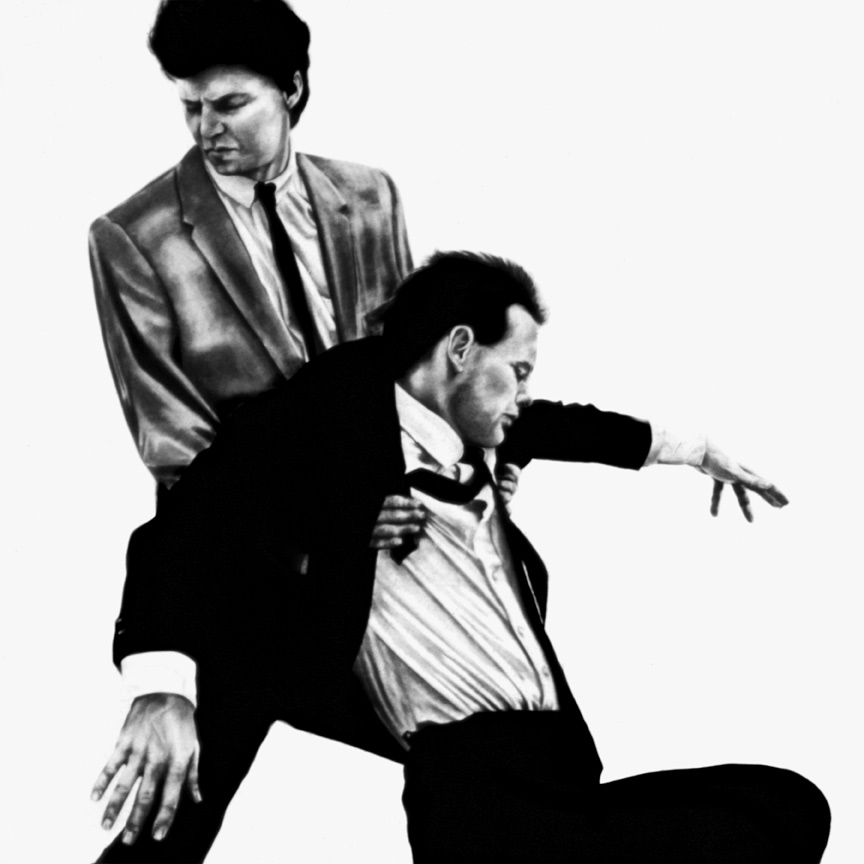
Lesson Nº 1 + The Ascension
Glenn Branca has always been a musician positioned halfway between the role of avant-garde composer and that of a rock musician. A pupil and disciple of the masters of American minimalism such as La Monte Young, Terry Riley, Philip Glass and Steve Reich, he has always had to fight against prejudice and fierce criticism. His position was certainly uncomfortable, too academic for rock fans and too “politically incorrect” for academics. In fact, Branca was trying to unhinge all the limits imposed by the rigid schemes of the avant-garde, aware of the fact that those who want to be truly avant-garde should have no limits. John Cage was also able to criticize him, even calling him a fascist ( Luciano Berio also did so for all minimalists) for the excessive rigidity of his compositions, even though he recognized his innovative power. After having created his best known album, The Ascension (1981), a true monument of maximalism played with a classical rock formation (guitars, bass and drums), he tries to approach a different format, the Symphony, as always halfway between rock and academia. Branca will like the experiment and will re-propose it several times in the following decades, to date there are sixteen symphonies (not all recordings are available). Here is how young Branca’s ensemble appeared to the American composer John Adams in one of his first live performances of the First Symphony: “Branca’s event that I listened to at the Japan Center Theater in San Francisco in 1981 was one of his symphonies for guitar . The group didn’t look very different from thousands of other independent or alternative rock bands of the time: guys in jeans and worn t-shirts busy with cables while maintaining that typical distracted expression of rock musicians.
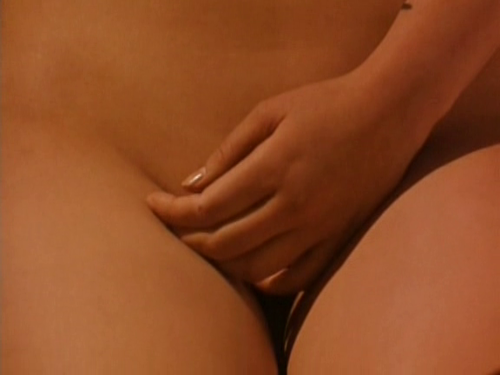
بيتر غريناواي
彼得·格林纳威
פיטר גרינווי
ピーター·グリーナウェイ
피터 그리너웨이
Питер Гринуэй
The Pillow Book
Beautiful to behold and impossible to forget, THE PILLOW BOOK is auteur Peter Greenaway’s erotically-charged drama about love, death, revenge and the indelible nature of our earliest memories. Each year on her birthday, Nagiko (Vivian Wu) would became her father’s canvas, as he painted the creation myth in elaborate, elegant calligraphy on her body. Years later, she continues the practice with a succession of lovers, including a bisexual translator (Ewan McGregor) who becomes a pawn in an escalating game of vengeance against her beloved father’s exploitative publisher. Told in a series of chapters and featuring innovative cinematography and picture-in-picture techniques, Roger Ebert called THE PILLOW BOOK “a seductive and elegant story [that] stands outside the ordinary.”
cinema full

Shenzhen Genzon Technology Innovation Center
Aedas
Cette image vivante implique les possibilités infinies dans l’intégration de la technologie, de l’énergie et de l’innovation. La conception propose des ascenseurs-navettes et des terrasses partagées le long du côté centripète de chaque tour pour engendrer un environnement de bureau relaxant à expansion verticale. La zone ouverte s’étend longitudinalement et se rejoint naturellement au fond; accentué par l’éclairage intérieur, des contours d’étamines dorées émergent et les panneaux de verre incurvés se présentent comme des pétales, faisant allusion à la muse florale du projet.

Mäander
Meander ist eine großflächige immersive Testumgebung, die in einem historischen Lagergebäude im Zentrum einer Wohnhochhaussiedlung in Cambridge, Ontario, errichtet wurde. Die Netzgerüste, aus denen das Testfeld besteht, sind als eine Reihe von Arten innerhalb eines künstlichen Ökosystems organisiert, die sich sanft biegen und auf die Bewegung der Betrachter reagieren. Ähnlich wie in natürlichen Umgebungen wie Flüssen und Wolken leiten große Gruppen von Teilen physikalische Impulse und Datensignale hin und her, sodass die gesamte Umgebung als zusammenhängendes Ganzes arbeiten kann. Die Innovationen in Meander schlagen Wege vor, um adaptive, sensible Gebäude der Zukunft zu schaffen.
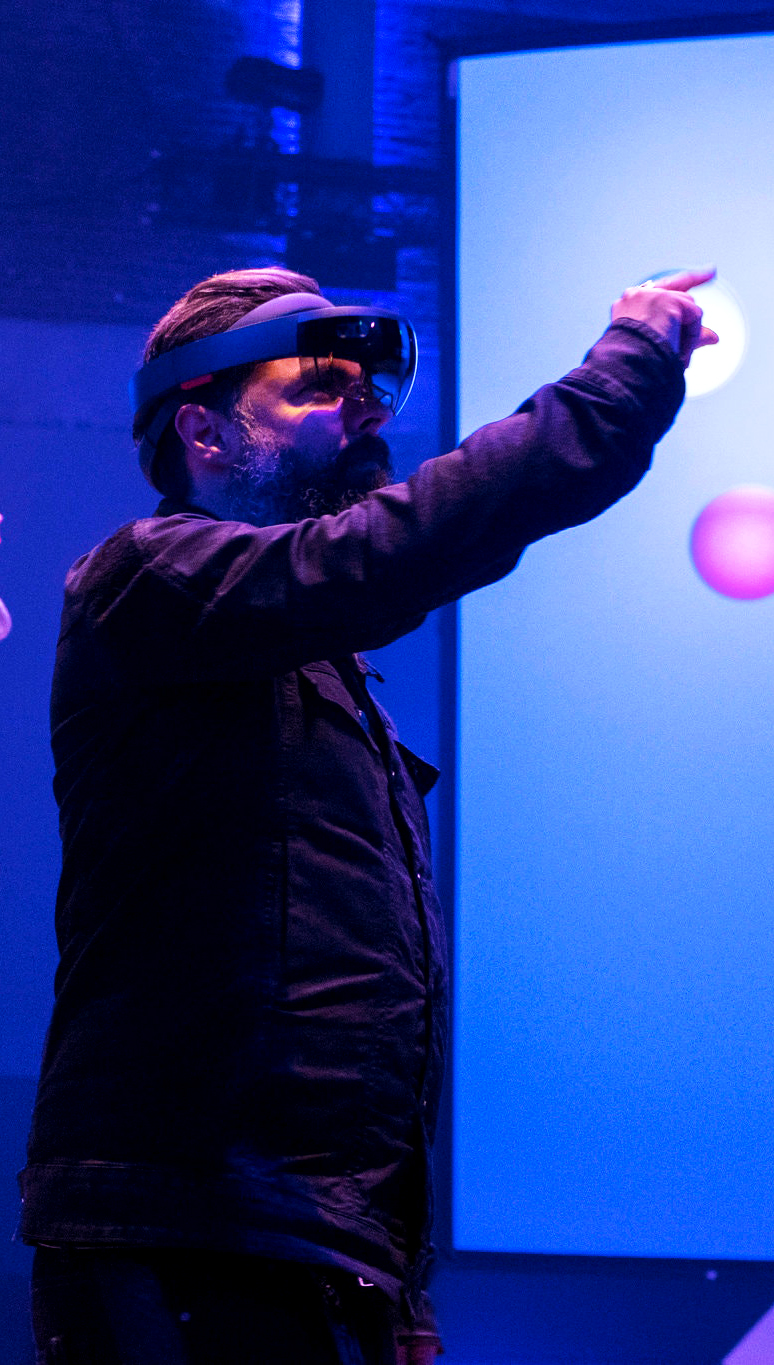
Floraison
N’exigeant aucune compétence musicale ou technique, l’application Bloom égalitaire et conviviale a permis à toute personne de tout âge de créer de la musique, simplement en touchant l’écran. Partie instrument, partie composition et partie illustration, les commandes innovantes de Bloom ont permis aux utilisateurs de créer des motifs élaborés et des mélodies uniques en touchant simplement l’écran. Un lecteur de musique générative a pris le relais lorsque Bloom est resté inactif, créant une sélection infinie de compositions et les visualisations qui les accompagnent. Cette version utilise la réalité mixte avec HoloLens.

Urban Sun
URBAN SUN des Designers Daan Roosegaarde und seines Teams ist die weltweit erste künstliche Sonne, die öffentliche Räume mit einem sicheren UVC-Licht von 222 Nanometern vor dem Coronavirus desinfiziert. Nach dem erfolgreichen Start in Rotterdam geht URBAN SUN auf Welttournee zum Aarhus Festival in Dänemark, dem Museum of Design Atlanta in den USA, dem niederländischen Pavillon auf der World Expo 2020 Dubai in den VAE und anderen Orten. URBAN SUN ist eine innovative Designinstallation, die bessere und sicherere Räume schafft, um freier zu atmen.

Grow
Daan Roosegaarde’s latest artwork GROW is an homage to the beauty of agriculture. In the world film premiere GROW appears as a luminous dreamscape of red and blue waves of light over an enormous field. GROW is inspired by scientific light recipes which improve plants’ growth and resilience. Most of the time we hardly notice the huge areas of the Earth which are literally feeding us. GROW highlights the importance of innovation in the agriculture system: How can cutting-edge light design help plants to grow more sustainably? How can we make the farmer the hero?

Grandir
GROW, la dernière œuvre de Daan Roosegaarde, est un hommage à la beauté de l’agriculture. Dans la première mondiale du film, GROW apparaît comme un paysage onirique lumineux de vagues de lumière rouges et bleues sur un immense champ. GROW s’inspire de recettes lumineuses scientifiques qui améliorent la croissance et la résilience des plantes. La plupart du temps, nous remarquons à peine les immenses zones de la Terre qui nous nourrissent littéralement. GROW souligne l’importance de l’innovation dans le système agricole : comment une conception d’éclairage de pointe peut-elle aider les plantes à pousser de manière plus durable ? Comment faire du fermier le héros ?

LIGHT
“Helen Pashgian is a pioneer and pre-eminent member of the California Light and Space Movement. Her signature forms include columns, discs and spheres in delicate and rich coloration, often with an isolated element suspended, embedded or encased within. Pashgian’s innovative application of industrial epoxies, plastics and resins effect semi-translucent surfaces that simultaneously filter and contain illumination. Activated by light, these sculptures resonate in form and spatiality, both inner and outer.” Dimitris Lempesis

SECHS
SECHS brings Bach’s heritage together with modern composition techniques and a refined kinetic light sculpture – emphasizing and re-interpreting his innovation in symmetry, repetition and composition. Following the likes of Wendy Carlos’ critically acclaimed ‘Switched on Bach’ — the first electronic interpretation of Bach’s work — and later re-interpreters such as Max Richter for Vivaldi, Acket & Vos present this completely new rendering of one of the world’s most influential composers. Together with the kinetic light sculpture by Christopher Bauder and spatial sound innovators 4DSOUND the composition is translated to a spatial immersive experience.
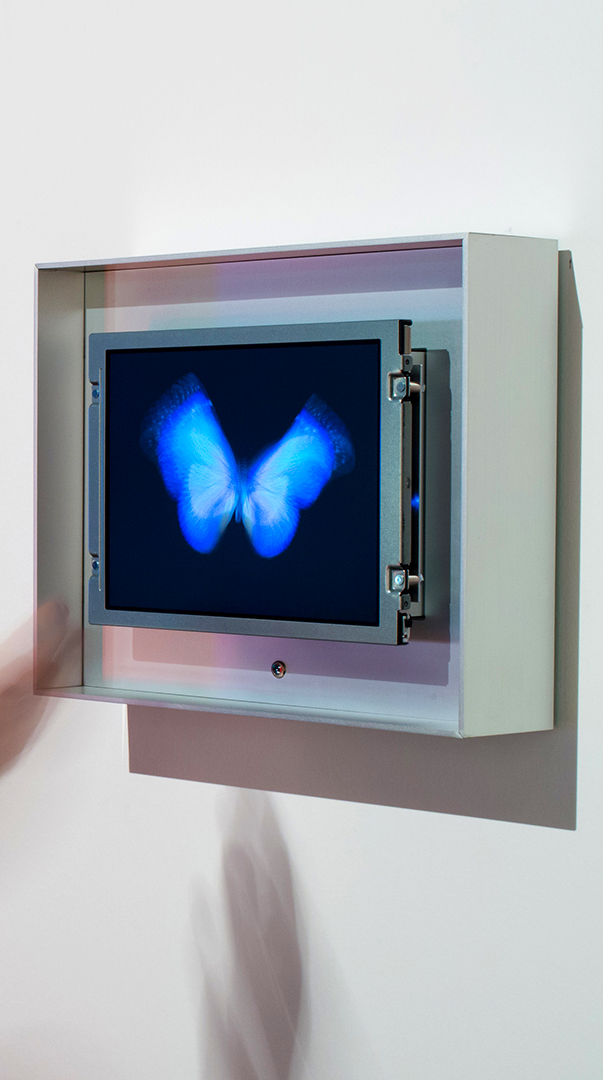
Babyflutter
Baby Flutter is een verzameling kunstwerken die Harris’ fascinatie voor vlinders en hun prachtige vormen verkent. Binnen de interactief bestuurde stukken wordt elke individuele vlinder tot leven gebracht door middel van innovatieve technologieën die een unieke betrokkenheid van de kijker mogelijk maken. Op basis van zijn reizen en ervaringen heeft Harris zijn favoriete tien vlinders geselecteerd, één voor elk van de LCD-schermen. Sommige zijn inheems in specifieke regio’s die hij heeft bezocht, terwijl andere vaak over de hele wereld worden aangetroffen. Elke soort is geherinterpreteerd als een ‘levend’ portret, met hun specifieke kenmerken. Als een kijker het kunstwerk nadert, veranderen de vlinders van rusthouding in vliegmodus, waarbij ze de bewegingen van de kijker volgen in een poging om hun prachtige vleugels in slow motion-vlucht te laten zien.

Franchise Freedom
Franchise Freedom is een performatieve kunstinstallatie van DRIFT die de relatie tussen mens, natuur en technologie onderzoekt. Een autonoom vliegende zwerm van honderden drones stelt het menselijke concept van vrijheid en sociale constructie in vraag. Het nodigt je uit om een poëtische kant van technische innovatie te bekijken en terug te verbinden met de natuur. Gebaseerd op een biologisch algoritme van meer dan 10 jaar onderzoek naar het vlieggedrag van spreeuwen, verlegt het kunstwerk de grenzen tussen natuur en technologie en genereert het een impactvolle sociale verbinding.

Universe
WHITEvoid ontwierp en realiseerde de dynamische LED-installatie met de nieuwste innovatie van WHITEvoid’s huismerk Kinetic Lights: de videodriehoeken met HD realtime streaming. De productie van het hele project werd ondersteund door het lokale L!VE Kingway-team in Beijing. De precieze kinetische bewegingen van verschillende vormen en vormen speelden de rol van een ‘acteur’ of ‘performer’ in plaats van ‘slechts een achtergrond’ te zijn (zoals meestal het geval is bij videowalls of projecties). Gecombineerd met de uitvoering van een volkskoor, stelde deze multidimensionale video-installatie artiesten in staat om in realtime op het podium te communiceren met het ‘universum‘.

DigiScape – Forest
Lors de la réalisation de ce projet, je passe le plus de temps à gérer des visuels raisonnables et des idées innovantes pour l’image. Je veux prendre soin de chaque détail tel que l’atmosphère, la dynamique des fleurs et des plantes, le changement progressif du soleil et de l’ombre et l’effet du portail lumineux de transition de scène. Cela m’a coûté près d’un demi-mois pour l’éclairage, le réglage des couleurs et la composition. Ce qui se passe normalement, c’est que la partie la plus difficile d’un projet n’est pas de CONSTRUIRE l’environnement mais d’IDÉRER le concept innovant. En raison des progrès technologiques, le seuil technique deviendra de plus en plus bas. Nous devrions nous concentrer davantage sur l’idéation des concepts.
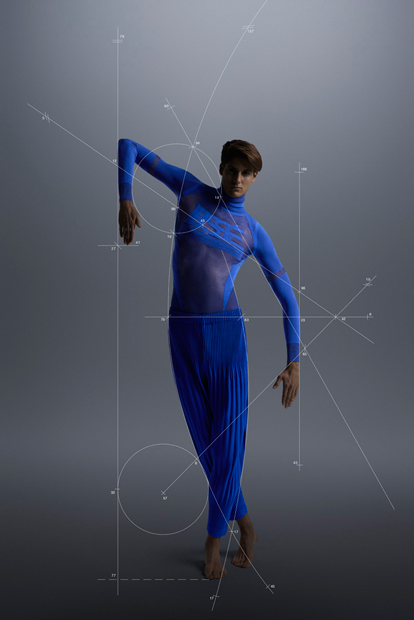
ايسي مياكي
איסי מיקים
イッセイミヤケ
이세이 미야케
HOMME PLISSÉ
Im Zentrum von Miyakes Philosophie der Kleidung steht die Idee, ein Kleidungsstück aus einem Stück Stoff zu kreieren. und die Erforschung des Raumes zwischen dem menschlichen Körper und dem Gewebe, das ihn bedeckt. Sein Fokus auf Design war immer, ein ausgewogenes Verhältnis zwischen Tradition und Innovation aufrechtzuerhalten: handgefertigte und neue Technologie. FOLDING BITTE wurde 1993 geboren und ist eine radikale, aber äußerst praktische Form zeitgenössischer Kleidung: Sie kombiniert eine alte Idee, eine dreidimensionale Figur mit zweidimensionalem Material unter Verwendung von Falten zu verbinden, mit neuer Technologie, Funktionalität und Schönheit . 1998 kehrte Miyake zu seiner ursprünglichen Liebe zur Forschung und Erforschung zurück und startete mit dem Mitarbeiter Dai Fujiwara ein neues Projekt namens A-POC (One Piece of Fabric). Durch die Erforschung der Möglichkeiten zwischen Kreativität und digitaler Technologie hinterfragt Miyake die traditionellen Methoden, mit denen wir Dinge tun.

recognition
RECOGNITION
Recognition, winner of IK Prize 2016 for digital innovation, is an artificial intelligence program that compares up-to-the-minute photojournalism with British art from the Tate collection. Over three months from 2 September to 27 November, Recognition will create an ever-expanding virtual gallery: a time capsule of the world represented in diverse types of images, past and present.A display at Tate Britain accompanies the online project offering visitors the chance to interrupt the machine’s selection process. The results of this experiment – to see if an artificial intelligence can learn from the many personal responses humans have when looking at images – will be presented on this site at the end of the project.Recognition is a project by Fabrica for Tate; in partnership with Microsoft, content provider Reuters, artificial intelligence algorithm by Jolibrain.
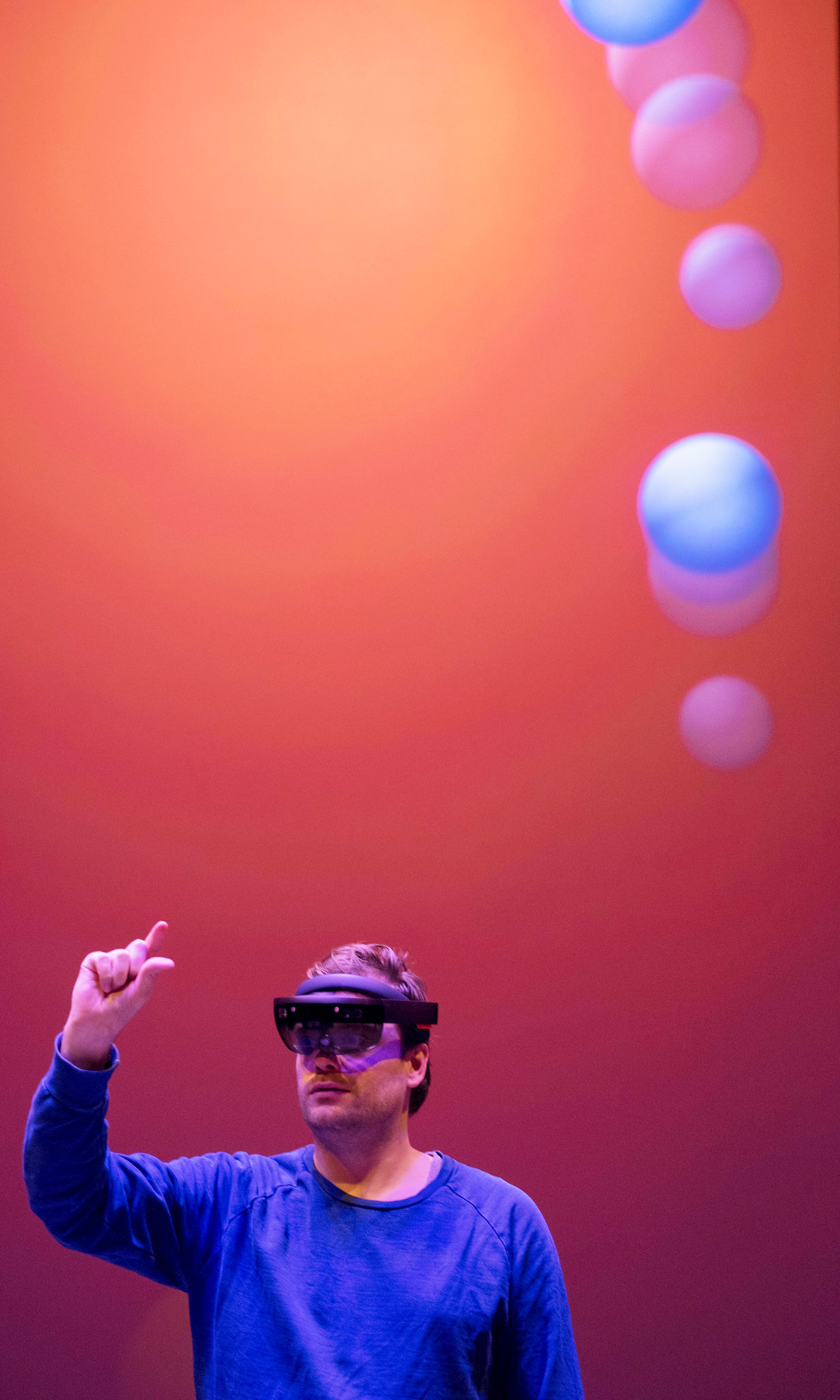
Bloom
Requiring no musical or technical ability, the egalitarian and user-friendly Bloom app enabled anyone of any age to create music, simply by touching the screen. Part instrument, part composition and part artwork, Bloom’s innovative controls allowed users to create elaborate patterns and unique melodies by simply tapping the screen. A generative music player took over when Bloom was left idle, creating an infinite selection of compositions and their accompanying visualizations. This version uses mixed reality with HoloLens.

Ufabulum
Soundcrash are proud to present the electronic music innovator that is Squarepusher! Beginning his sonic experiments in 1994, Squarepusher constantly strives to push the boundaries and limits of electronic music. In May 2012 Squarepusher unleashed his latest musical venture ‘Ufabulum’, an album of music generated purely from digital programming, ensuring his influence within today’s global music electronic scene is as vital as ever. For his first headline ‘Ufabulum’ album show in London, Squarepusher will take over the historic music hall Hackney Empire with his largest ever light-show to date! This is a unique opportunity to witness one of electronic music’s pioneers in an extraordinary setting.
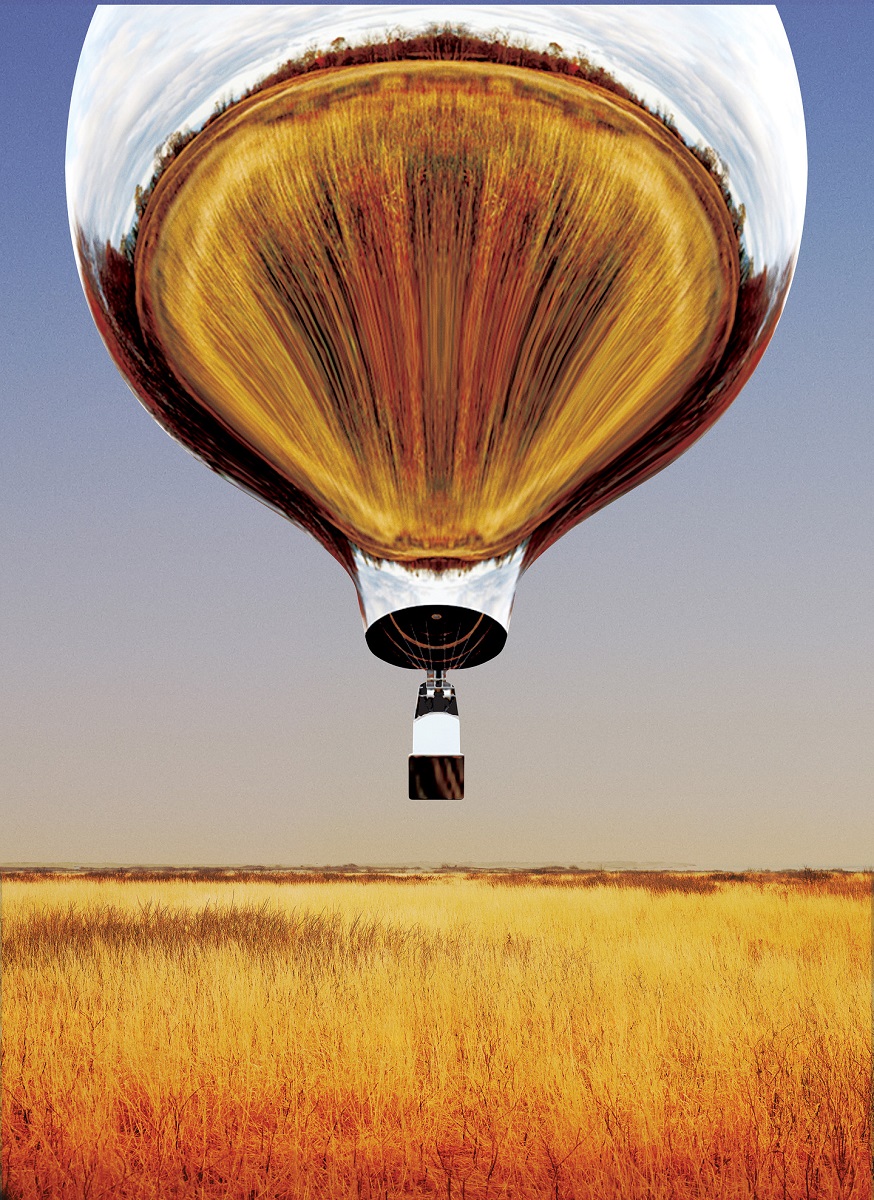
ダグエイケン
道格·艾特肯
new horizon
Doug Aitken was born in California in 1968. He lives and works in Los Angeles and New York. Widely known for his innovative fine art installations, Doug Aitken is at the forefront of 21st century communication. Utilizing a wide array of media and artistic approaches, his eye leads us into a world where time, space, and memory are fluid concepts.
AVATAR X Lab
Il progetto è una partnership tra ANA Holdings Inc. e Japan Aerospace Exploration Agency (JAXA); una parte di AVATAR X, un programma collaborativo per il progresso dell’esplorazione e dello sviluppo dello spazio. ANA e JAXA sono entrambe esperte nel lanciare veicoli nell’atmosfera, la sensazione di sospensione o di “essere nell’aria” è naturale per entrambe le entità. L’AVATAR X Lab Building è progettato come un edificio sospeso che galleggia sopra un cratere simile alla luna. La struttura a più piani galleggia a diciotto metri sopra il fondo del cratere ed è accessibile da un ponte. Quando gli astronauti salgono a bordo di un veicolo spaziale attraversano un ponte; quando saliamo a bordo di un aereo, attraversiamo un ponte a reazione tra il terminal e l’aereo. Questo è il nostro ultimo contatto con un terreno familiare prima di partire per un posto nuovo. L’edificio sospeso incarna questo varco di soglie: dopo aver superato il ponte si viene trasportati in un nuovo luogo, l’AVATAR X Lab Building, dove l’innovazione tecnologica cambierà il modo in cui vediamo il mondo.

Anerkennung
Recognition, Gewinner des IK-Preises 2016 für digitale Innovation, ist ein Programm für künstliche Intelligenz, das aktuellen Fotojournalismus mit britischer Kunst aus der Tate-Sammlung vergleicht. In drei Monaten vom 2. September bis 27. November wird Recognition eine ständig wachsende virtuelle Galerie schaffen: eine Zeitkapsel der Welt, die in verschiedenen Arten von Bildern aus Vergangenheit und Gegenwart dargestellt wird. Eine Ausstellung in der Tate Britain begleitet das Online-Projekt und bietet Besuchern die Möglichkeit um den Auswahlprozess der Maschine zu unterbrechen. Die Ergebnisse dieses Experiments – um zu sehen, ob eine künstliche Intelligenz aus den vielen persönlichen Reaktionen lernen kann, die Menschen beim Betrachten von Bildern haben – werden am Ende des Projekts auf dieser Website vorgestellt. Recognition ist ein Projekt von Fabrica für Tate; in Partnerschaft mit Microsoft, Inhaltsanbieter Reuters, Algorithmus für künstliche Intelligenz von Jolibrain.

Divide, Multiply
The King Deluxe label teamed up with animator Keita Onishi to create an innovative music video for ‘Divide, Multiply’[…] The final result is a seriously aesthetically pleasing work of videographic art, living up exactly to King Deluxe’s ‘audio-visual laboratory’ manifesto. With its geometric simplicity, and cog-like machinery driven by symmetrical beats, the video instills the utmost satisfaction deep within every viewer.
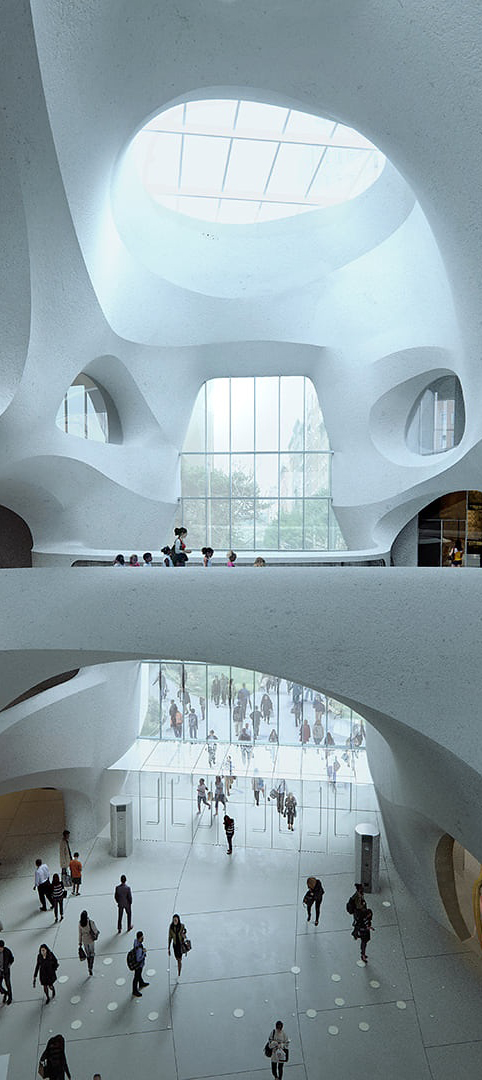
American Museum of Natural History
Richard Gilder Center for Science, Education, and Innovation
“We uncovered a way to vastly improve visitor circulation and museum functionality, while tapping into the desire for exploration and discovery that is so emblematic of science and also such a big part of being human. Upon entering the space, natural daylight from above and sight lines to various activities inside invite movement through the Central Exhibition Hall on a journey toward deeper understanding. The architectural design grew out of the museum’s mission.” Jeanne Gang

Light Cloud
The Light Cloud at the Merck Innovation Center detects visitors’ movements in the room and translates them into many different moods. The generative sculpture stimulates and facilitates intense encounters between people and technology. The room-filling installation consists of four curved strands that are concentrically superimposed and slightly shifted in relation to each other. OLED elements that are attached to the strands and controlled by sensors react to the visitors’ movements and to sound compositions. In combination, this generates a complex mosaic in which sound and light interact playfully and the viewers leave traces.
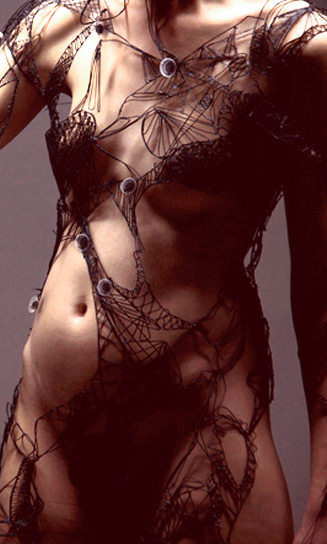
Skin Sucka
A project conceived with Clive van Heerden, Jack Mama (Philips Design Probes) and Bart Hess, Skinsucka explores a vision of our nano technology future whereby bio technology and robotics come together to question our attitudes of a synthetic future. Skinsucka reveals a future where microbal robots live in our shared spaces and autonomously they will undertake menial tasks such as cleaning our homes by eating the dirt. ‘Skinsuckas’ clean the skin, removing the vestiges of make up and providing the remedies to combat the excesses of the night before They swarm over the body extruding metabolized household dirt, dressing the body in a daily ritual of real time, customized manufacture – yesterday’s discarded clothing ready for recycling.” Clive and Jack’s work has consistently brought very diverse skills together in new innovation processes. In the late 1990’s they took designers and other creative skills into Philips Research labs in the Redhill, London and New York and created a specialist studio in London to develop the skills, materials and technologies for a host of Wearable Electronic business propositions in the areas of electronic apparel, conductive textiles, physical gaming, medical monitoring and entertainment.

bow chair
designed by Zaha Hadid Architects, Ross Lovegrove and Daniel Widrig

ShenZhen Science Technology Museum
A cascade of terraces will frame a large atrium at the heart of the Shenzhen Science & Technology Museum that Zaha Hadid Architects is developing in China. Slated for completion in late 2023, the pebble-shaped museum will encompass 125,000-square-metres and contain a mix of public spaces, galleries and educational facilities. It has been designed by Zaha Hadid Architects as a landmark for Shenzhen’s new Guangming Science City – a masterplan intended to establish the city as a hub for innovation.

Meander
Meander is a large-scale immersive testbed environment constructed within a historic warehouse building at the centre of a residential highrise development in Cambridge, Ontario. The meshwork scaffolds which comprise the testbed are organized as a series of species within an artificial ecosystem, gently flexing and responding to the movement of viewers. Similar to natural environments such as rivers and clouds, large groups of parts pass physical impulses and data signals back and forth, enabling the entire environment to work as an interconnected whole. The innovations in Meander suggest ways of making adaptive, sensitive buildings of the future.

‘Polar’
Issu d’une nouvelle approche de la mode contemporaine, Bori Gyorok continuera de se concentrer sur l’expérimentation dans les limites de l’innovation et de l’esthétique.

Untitled: (A Search for Ghosts in the Meat Machine)
What does it mean to be human? At first glance a simple question, the idea of being human is an unstable construct, continuously recrafted. Recent technological innovations allow us to redesign ourselves profoundly— from networked prosthetics and artificial intelligence, to the genetic code of life itself. Can our behaviors be reduced to algorithms? Can our bodies be upgraded with nonorganic integrations? Can sentience itself by manufactured in a lab? This set of nine sculptures examines personhood from anatomical, psychological, genetic, biochemical, behavioral, algorithmic, personal narrative and memory. In many ways, this installation is an emotional confrontation with being quantifiable.

sound cloud
London-based designer kazuhiro yamanaka has created the ‘sound cloud’ a light-emitting quantum glass speaker system installation for saazs ‘a glass house’ program. the structure is composed of five interactive monolithic glass panels, formed with the intention of modelling the integration of innovative glass within architecture and design. the sound and light radiating from ‘sound cloud’ shift in unison, their synchronization may be altered by the viewer as they adjust their aural and visual experience by means of a touch-screen controller.
yamanaka aspired for the visitors to ‘be able to hear the sound move from one to another, jumping back and forth and echoing from the panels.’
a sound module is attached to each panel. as it vibrates,the three layers of glass move at a frequency, which creates optimum sound quality. the sound for the installation was developed by the france-based sound designer, gling-glang. yamanaka and gling-glang devised a soundscape by which ‘sound cloud’ visitors were able to sense the sculptural construction of the music in walking through the installation’s glass-paneled pathway.
the glass is outfitted with a light-emitting system known as ‘LED in glass’, invented by quantum glass. through this technology, the panels become a source of light. the ‘sound cloud’ is illuminated as the LED bars are fitted around the edge of the panel in order to direct beams of light through the edge of the extra clear glass sheet. as a result, light refraction occurs from the front side by means of a white enamel screen print on the opposite side.
yamanaka chose to slightly obscure the brightness of the glass sound system by creating a thin layer from millions of light dots, culminating in a cloud-like shape.
AVATAR X Lab
The project is a partnership between ANA Holdings Inc. and Japan Aerospace Exploration Agency (JAXA); a part of AVATAR X, a collaborative program for the advancement of space exploration and development. ANA and JAXA are both experts at launching vehicles into the atmosphere, the feeling of suspension or ‘being in the air’ is natural for both entities. The AVATAR X Lab Building is designed as a suspended building floating above a moon-like crater. The multi-story structure floats eighteen meters above the crater bottom, and is accessible by a bridge. When astronauts board a spacecraft they cross a bridge; when we board a plane we walk across a jet bridge between the terminal and airplane. This is our last contact with familiar ground before taking off for someplace new. The suspended building embodies this crossing of thresholds: after passing over the bridge you are transported to a new place, the AVATAR X Lab Building, where technological innovation will change how we see the world.

SHIBUYA HYPER CAST. 2
Shibuya Hyper CAST. 2 is a showcase of most cutting-edge urban innovations combined into one building. Shibuya CAST., an existing development designed by noiz, has been an urban lab of mixed function and culture located in the middle of one of the hottest areas in Tokyo. This hypothetical project has started for the 5-year memorial celebration of the CAST., to project future possibility of the building, the area, our society, and potentially a form of future city. It demonstrates how cities of the future could be structured and operated. The project is based on urban studies in the area of mobility, social welfare, administration, funding, security, sustainability and more. Shibuya Hyper CAST. 2 translates the best features of vibrant downtown districts into vertical language of ever-growing cities of the future.

Fiber Optic Dress